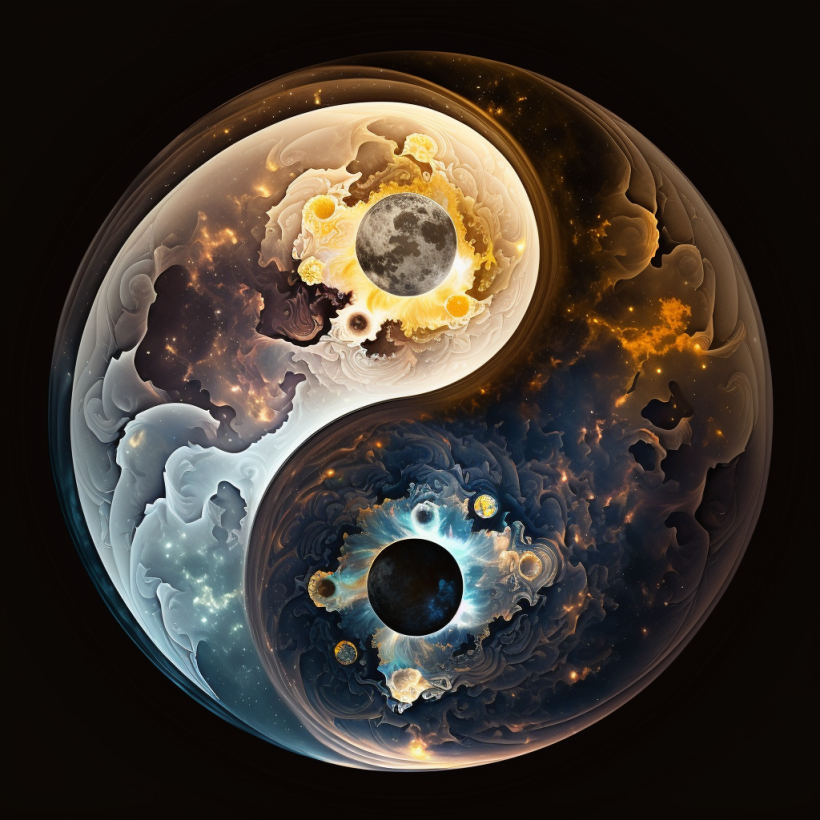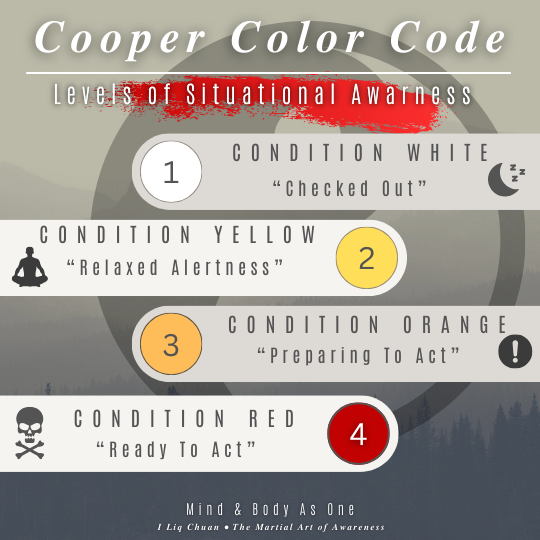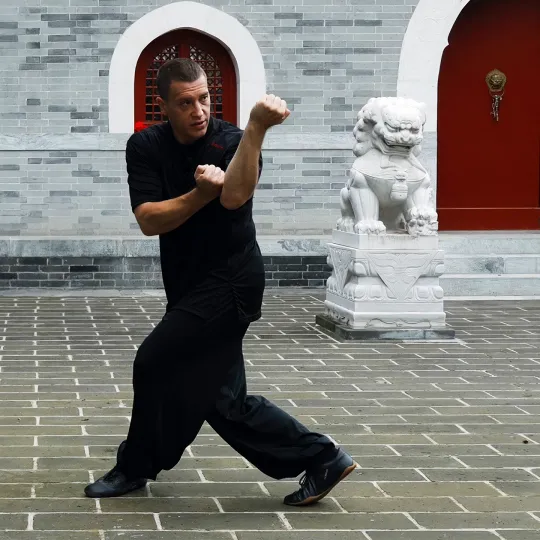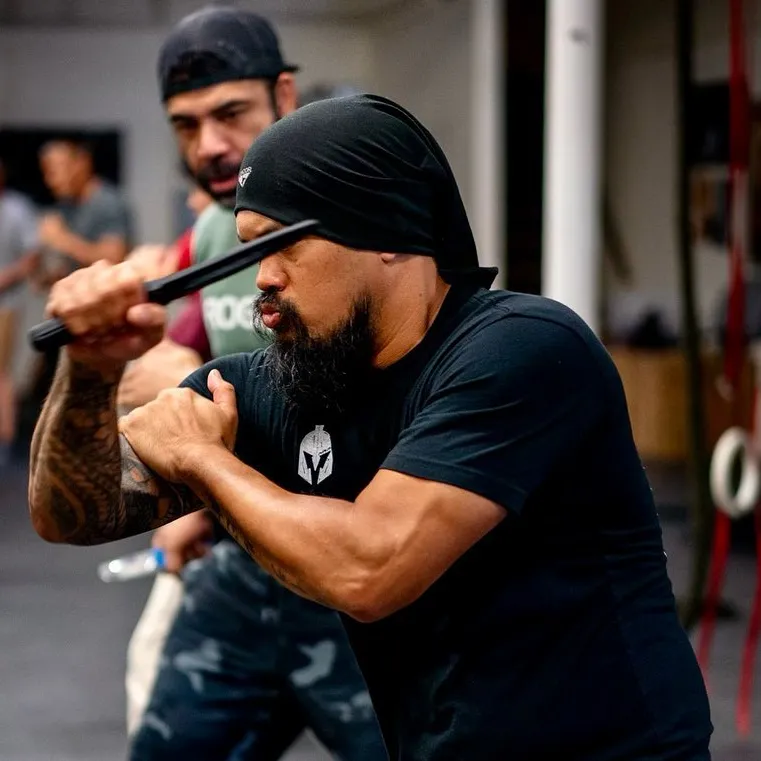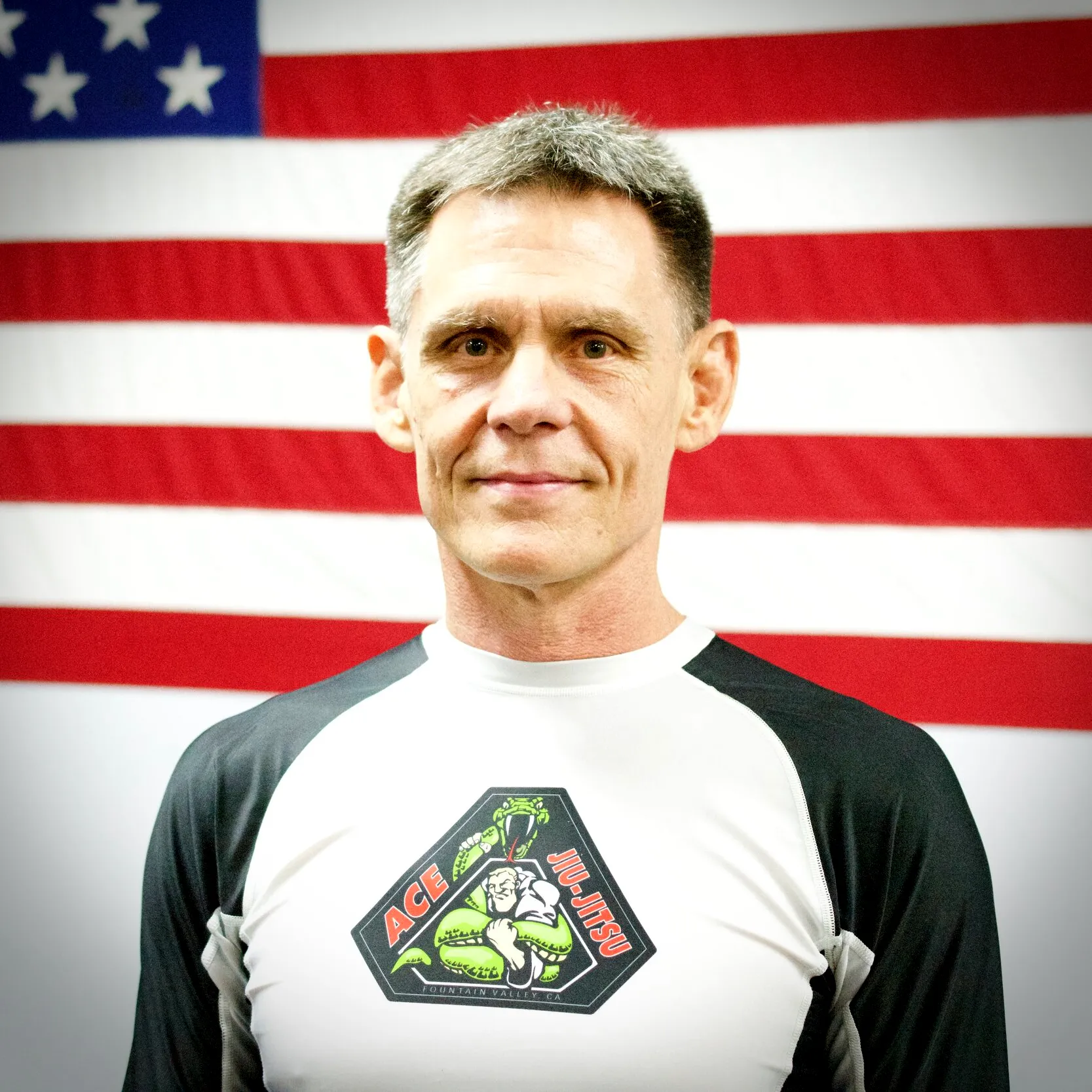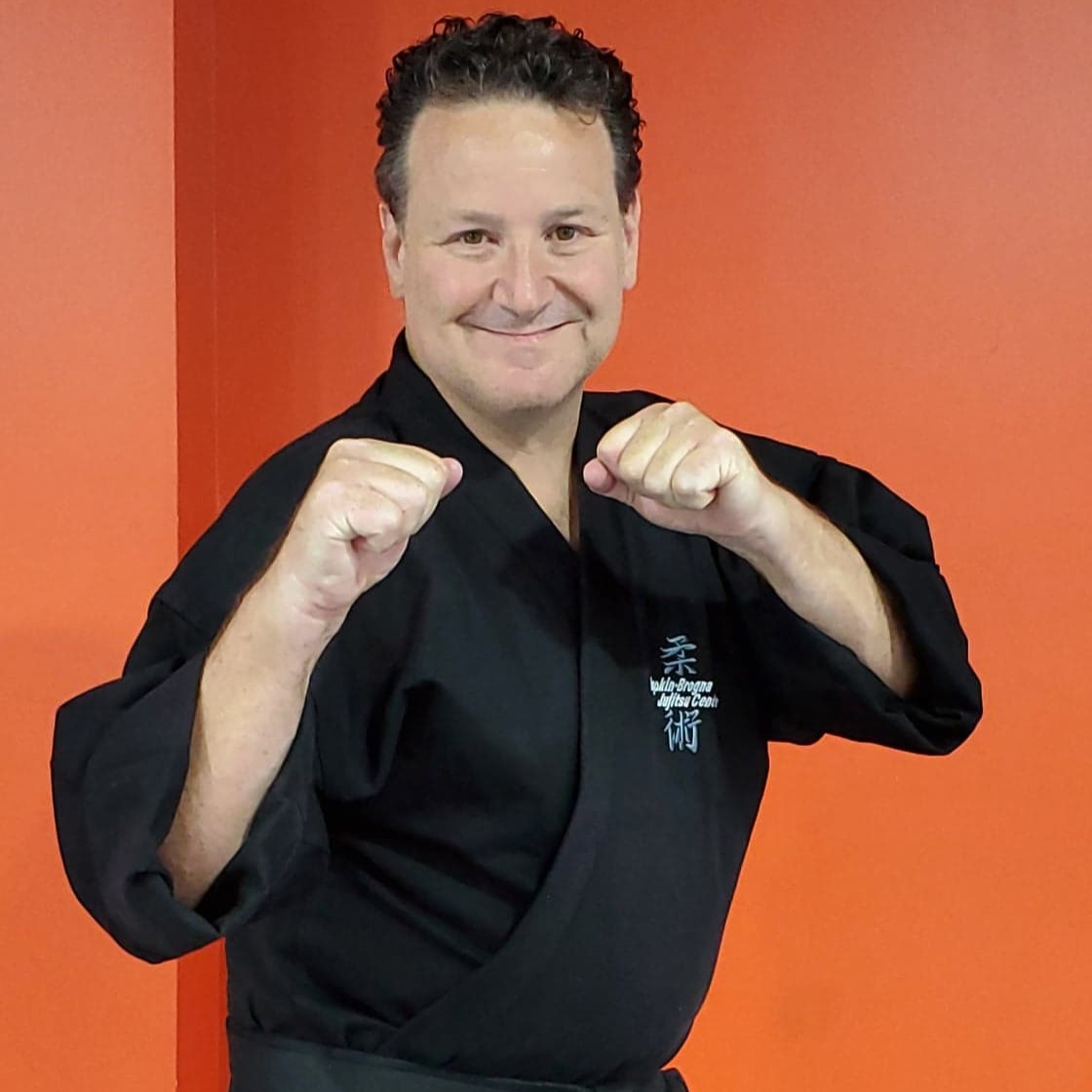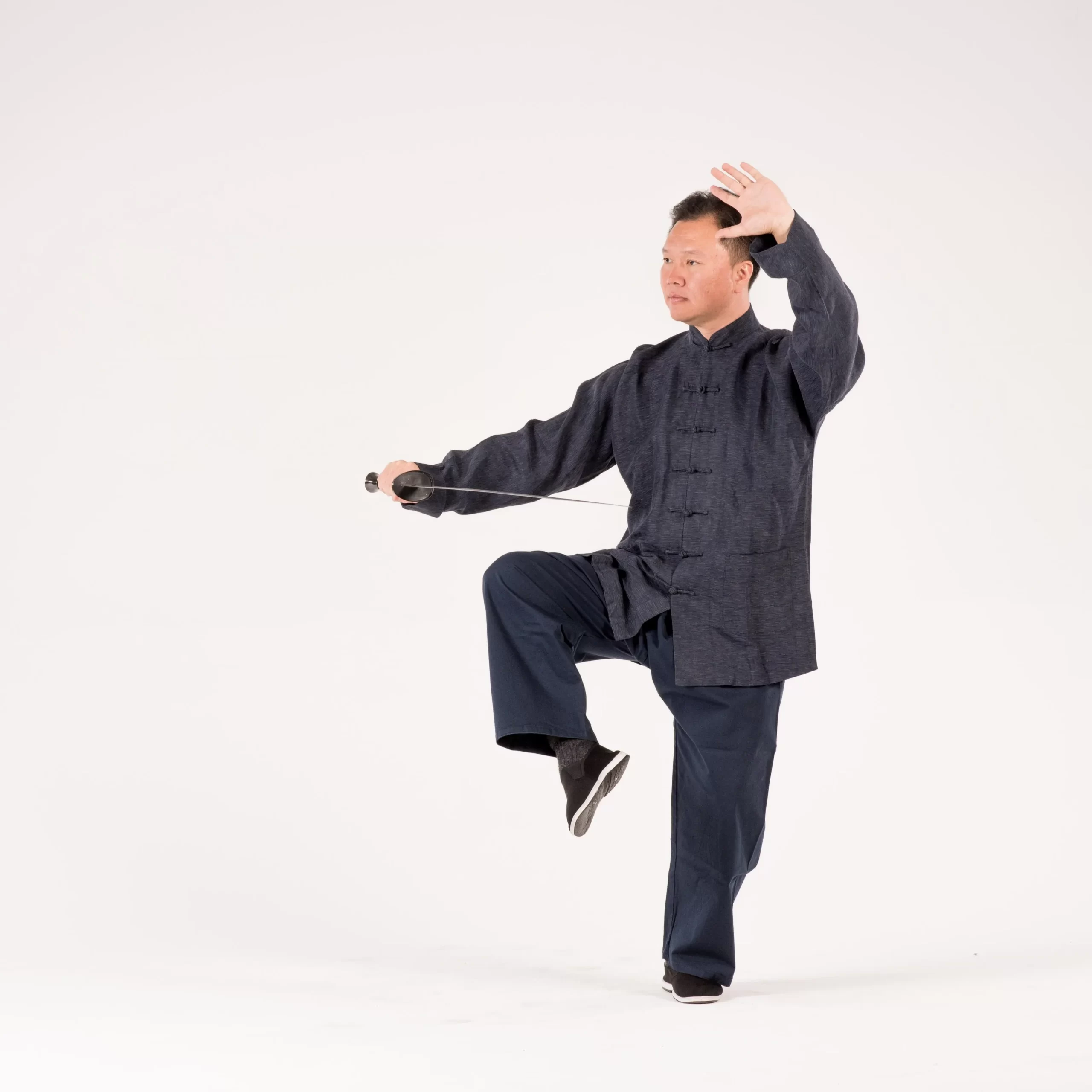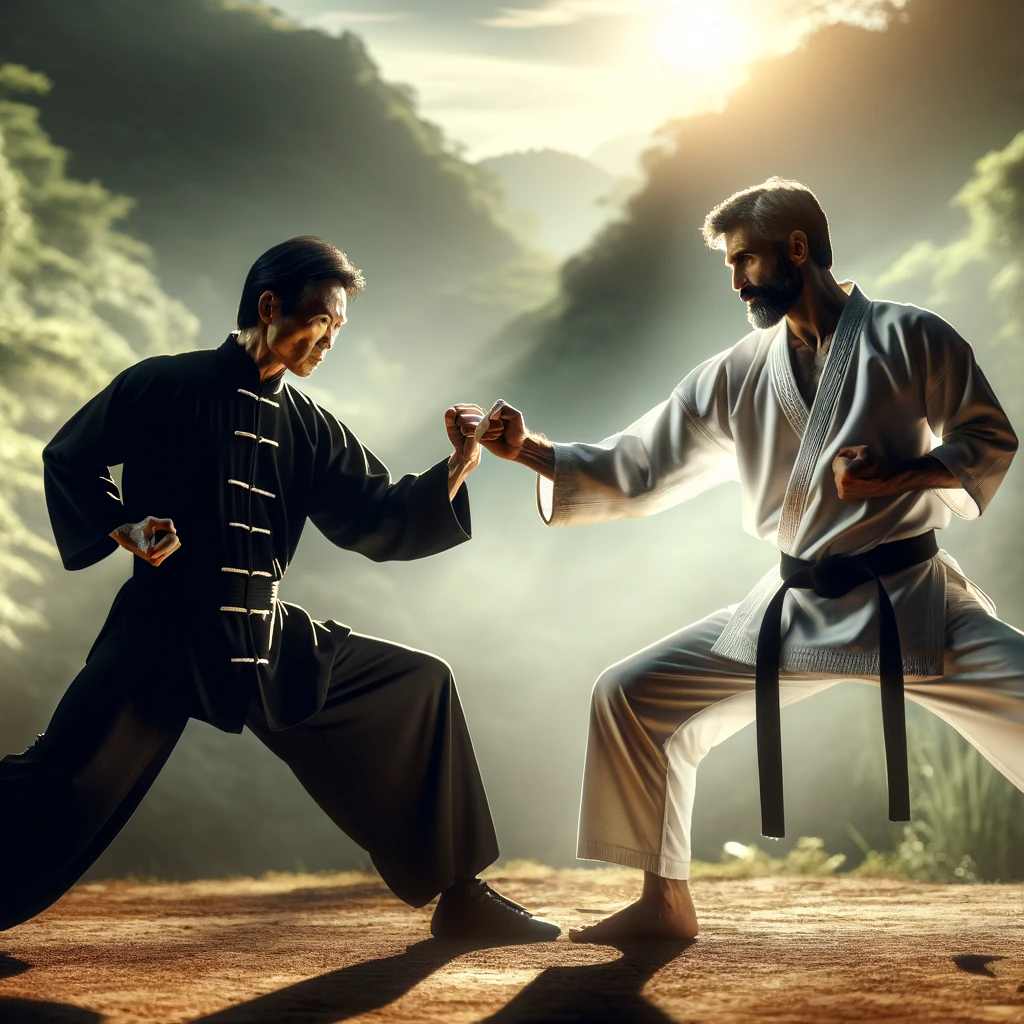
“Kung Fu vs. Karate: which is better?” It’s one of the hottest topics on the Internet and a source of fierce debate among martial arts enthusiasts. Recently, I had the pleasure of watching Prince Bell’s latest video on this subject, a piece that captivated my attention and inspired me to share some thoughts of my own on these ancient disciplines. Prince, a good friend and the creator of the best Bruce Lee channel on YouTube has outdone himself with this video, arguably his best to date.

In his insightful exploration, Prince delves into the heart of Kung Fu and Karate, unraveling their philosophies and techniques. Much like flowing water, Kung Fu is characterized by its fluidity and adaptability. The Kung Fu master moves with a grace and ease that belies their underlying strength, reminiscent of a river that carves its path through mountains and valleys, constantly adapting to the terrain yet persistently moving forward. Kung Fu embodies the flowing, more flexible aspects of nature. Yet, like water, it carries within it the potential for tremendous impact.
Karate, in contrast, stands as a solid mountain in the martial arts landscape. It is defined by its firmness, discipline, and powerful attacks. Like a towering peak that rises steadfastly above the winding rivers and valleys, Karate exudes a sense of unyielding strength and resilience.
Kung Fu and Karate embody the essence of Yin and Yang, two halves of a whole that mirror each other. This ancient concept, deeply rooted in Eastern philosophy, teaches us that seemingly opposing forces are interconnected and interdependent in the natural world. As we delve deeper into these martial arts, we begin to appreciate not just their differences but also how they might just be more alike than what initially meets the eye.
Karate vs. Kung Fu – History & Backgrounds
Kung Fu vs. Karate By Prince Bell (YouTube)
Kung Fu: A Reflection of Nature’s Harmony and Fluidity

In Kung Fu, we find a discipline as ancient and mysterious as the Shunan bamboo forest of China. Its roots delve deep into the fertile soil of Chinese history, intertwining with the philosophical branches of Taoism and Buddhism.
Kung Fu, or ‘gongfu,’ transcends the mere concept of martial arts; it embodies mastery achieved through dedicated effort and time. Kung Fu mirrors the natural world in its emphasis on harmony and the fluidity of movement, reminiscent of a river carving its path through the landscape.
I have already written extensively about the history and philosophy of Kung Fu, exploring its intricate dance with Chinese culture and its profound impact on the practitioners’ journey toward self-discovery and mastery.
Karate: The Rhythmic Pulse of Discipline and Strength
As we delve into the history of Karate, we uncover intriguing connections that hint at a deeper kinship with Kung Fu. Karate’s roots can be traced back to Okinawa, a land under Japanese occupation, where local fishermen ingeniously blended White Crane Kung Fu elements with native empty-hand fighting techniques. This fusion birthed a unique martial art.
Karate moved to mainland Japan and continued to evolve, absorbing influences from the Japanese way of the warrior, Budō. This integration further shaped Karate, leading to the emergence of various branches, each reflecting a blend of original Okinawan techniques and the disciplined approach of Budō.

Kung Fu Vs. Karate – Unstoppable Force Meets Immovable Object
While Kung Fu is oft likened to flowing water, adaptable and graceful, Karate stands as the firm mountain – solid, unyielding, and powerful. This comparison is not just about physical techniques; it reflects their underlying philosophies. Karate, emphasizing discipline, strength, and directness, embodies the heart of Japanese Budō, the steadfastness and resilience of a mountain, unwavering in the face of challenges.
Our exploration into the origins and evolution of Karate reveals a martial art that, while distinct in its approach and techniques, shares a common thread with Kung Fu. In their unique ways, both arts teach balance, strength, and adaptability. They remind us that in the diverse world of martial arts, different paths can lead to similar destinations – the pursuit of mastery, harmony, and understanding.
In both Kung Fu and Karate, we observe a reflection of nature’s principles – adaptation, perseverance, and balance. These martial arts, like the diverse species in the natural world, have evolved uniquely yet share a common thread in their pursuit of excellence and harmony.
Kung Fu vs Karate In The Movies
In the vibrant world of cinema, much like the kaleidoscopic display of a coral reef, Kung Fu and Karate have been portrayed with a flair that often blurs the lines between reality and fantasy. This portrayal serves to captivate, inspire, and entertain more than accurately represent these disciplines’ true nature.
In the realm of film, we observe a spectacle where the agility and improvisational flair of Kung Fu clashes with the sharp, calculated techniques of Karate. These cinematic depictions, much like the dramatic displays in the animal kingdom, often exaggerate the styles for the audience’s thrill, overshadowing the subtler aspects of discipline and philosophy inherent in both arts.
In my previous article ‘Hollywood vs. Reality,’ I delve into how films like ‘Crouching Tiger, Hidden Dragon‘ and ‘The Karate Kid’ paint a picture of martial arts that, while thrilling and visually stunning, deviate significantly from these arts’ real-life practice and philosophy. In these cinematic portrayals, the martial arts are often idealized and exaggerated, focusing on spectacular moves and dramatic confrontations that bear little resemblance to the stark realities of hand-to-hand combat and self-defense.
However, these portrayals, though not accurate, have played a significant role in popularizing Kung Fu and Karate worldwide. They have inspired generations to explore these arts, igniting a spark of interest in the rich cultural heritage and discipline these fighting arts embody.
As we reflect on the cinematic portrayals of Kung Fu and Karate, we are reminded of the importance of discerning the spectacle from the substance. The real journey of a martial artist involves more sweat, discipline, and dedication than a two-hour movie or a brief glimpse into their world can depict.
No Shortcuts To Mastery
In his book ‘How To Shoot Like A Navy SEAL,’ retired SEAL Chris Sajnog wrote, “Becoming a virtuoso of firearms requires hours upon hours of dedication and perseverance. There are no shortcuts to becoming a master, but there is a tendency among new shooters to ignore the basic fundamentals.“

Regardless of what martial art style you train, advanced techniques are just the basics done to near perfection, or as CrossFit founder Greg Glassman said when he introduced the concept of ‘virtuosity,’ “performing the common uncommonly well.”
In stark contrast to the exhilarating training montages of martial arts movies like “Rocky” and “Bloodsport,” the real essence of martial arts training lies in the quiet, persistent practice of basics. These moments, often devoid of cinematic glamour, are where true skill is forged. GM Sam Chin’s profound insight, “I Liq Chuan trains the cause, not the effect, but the cause doesn’t look like effect,” captures this essence perfectly.
The path to mastery in martial arts, much like the Chinese concept of 吃苦 (chī kǔ), or “eating bitterness,” involves long hours of practicing simple, seemingly mundane movements. Though these exercises may test one’s mental and physical limits, they are the bedrock upon which genuine skills are built. They may not captivate an audience like a movie, but in the stillness of diligent practice, the true spirit of martial arts comes alive.
Clash of The Titans – Bruce Lee vs Chuck Norris
The showdown between Bruce Lee and Chuck Norris in “Enter The Dragon” is the quintessential Kung Fu vs. Karate moment, much like the rare and awe-inspiring convergence of two mighty rivers. Prince’s analysis of this iconic battle delves into the essence of Kung Fu and Karate, revealing these martial arts’ profound intricacies and beauty.
In this cinematic duel, Bruce Lee embodies the fluidity, adaptability, and explosive power of Kung Fu. Lee’s movements, a blend of speed, agility, and precision, embody the essence of Kung Fu’s adaptability to any situation. Bruce Lee’s style in the film is a poetic expression of martial arts, where each movement flows into the next with grace and purpose, much like a river seamlessly navigating through the landscape.
On the other side of this epic encounter stands Chuck Norris, a Karate virtuoso who showcases strength, discipline, and powerful strikes. His methodical and grounded approach, much like the unwavering stance of an immovable boulder, illustrates the core principles of Karate. Norris’s style is a testament to the formidable force of this martial art, where each strike and stance is delivered with the precision and ferocity of an eagle swooping down on its prey.
Kung Fu vs. Karate – Bruce Lee’s Analysis
The comparison between Karate and Kung Fu was eloquently described by Bruce Lee in a 1965 screen test. Lee offers a profound insight into the philosophies and techniques of these disciplines. This comparison, like observing the distinct yet harmonious movements of different animals in the wild, reveals each style’s unique essence and beauty.
Bruce Lee likened the Karate punch to an iron bar – solid, forceful, and unwavering. This imagery evokes the strength of a towering oak, its roots deep in the earth, standing firm against the howling winds. The Karate punch embodies this unyielding power, a testament to the discipline’s emphasis on direct and powerful strikes. It speaks to a philosophy of resilience and strength, much like the steadfastness of a mountain that endures the test of time.
In contrast, Lee described the Kung Fu punch as an iron chain with an iron ball attached to the end, symbolizing the hard within the soft. This analogy paints a picture of bamboo swaying gracefully in the breeze, moving with fluidity yet capable of withstanding great forces. The Kung Fu punch, with its flowing movement, mirrors this dance of nature, combining the elegance of a river’s current with the impactful force of a crashing wave. It reflects the philosophical emphasis on adaptability and the harmonious balance between softness and power.
As we delve deeper into these martial arts, we sense an underlying similarity in their core principles. Both Karate and Kung Fu, in their unique ways, teach us about hardness and softness, the importance of balance, and the pursuit of mastery. This realization gently guides us to conclude that, despite their differences, these arts share more commonalities than one might initially perceive. They are not just methods of combat but pathways to understanding the deeper rhythms of life, each offering valuable lessons that resonate both on and off the mats.
Conclusion – The Harmonious Symphony of Martial Arts
In the timeless debate of Kung Fu vs. Karate, the quest to crown one as superior over the other misses the true essence of these enduring arts. Both Kung Fu and Karate have withstood the test of time, not just as combat methods but as profound pathways to self-discovery and personal growth. Rather than asking which art is better, a more productive approach beckons us.
Through the disciplined practice of either Kung Fu or Karate, we can address our shortcomings and harness our full potential, allowing these arts to bring out the best in us. This journey is less about the art we choose and more about how we let it shape and refine us, transforming our weakness into strength and our potential into reality.
The dedication to mastery in these martial arts is a long journey and a relentless pursuit of excellence. It is a testament to the human spirit’s capacity for growth and transformation. This dedication, akin to the slow-growing mighty oak with its deep roots, serves as a reminder of the rewards that can come only with patience, perseverance, and respect for history and traditions.
I extend an invitation to explore and respect these disciplines to the reader. Venture into the world of Kung Fu and Karate not just as martial arts but as pathways to understanding life’s intricate dance. Let these arts be a guide to discovering your inner strength, balance, and potential. Embrace the journey with an open heart and mind, like an explorer setting sail into unknown waters, eager to discover new horizons.
Additional Resources – Prince’s YouTube Channel
For those eager to continue their exploration of martial arts, I highly recommend delving into Prince’s YouTube channel. As the premier Bruce Lee channel and a personal friend of mine, Prince offers an unparalleled journey into the world of this martial arts legend. His channel is a rich source of insights, delving into Bruce Lee’s philosophy, techniques, and cinematic legacy.

Read More!
- Why Hand-to-Hand Combat Still Matters in the Firearm Era
- What is a Kung Fu Master Called?
- Woman Fight’s Off Her Attacker At The Gym!
- Bruce Lee’s Real Fights: The True Stories Behind the Legend
About the Author

Ashe Higgs, I Liq Chuan Master Instructor & L2 Nutrition Coach
Ashe is a highly skilled martial arts instructor and certified nutrition coach with over two decades of experience in the field. He holds a Master Instructor certification in I Liq Chuan under Sam FS Chin, making him one of only several individuals worldwide to hold the title. He has taught classes and workshops worldwide and is passionate about helping others achieve their fitness and wellness goals.
With a background in full-contact fighting and a Level 2 certification from Precision Nutrition in nutrition coaching, Ashe is a well-rounded expert in the fields of martial arts. In addition to his expertise, he has a wealth of experience in teaching and mentoring others. He has a natural ability to connect with his students and inspire them to reach their full potential.
Disclaimers & Conflicts of Interest
I am not a doctor, and the information provided should not be considered medical advice. The information provided is for educational and informational purposes only and should not be used as a substitute for professional medical advice, diagnosis, or treatment. Consult your doctor or a qualified healthcare professional before making any changes to your diet, exercise routine, or lifestyle.
Please note that some of the links provided in this content may be affiliate links, meaning that I may receive a small commission if you purchase through them. However, please rest assured that any products or services recommended are based on my personal experience and belief in their value. I only recommend products or services that I have personally used and believe in.


















